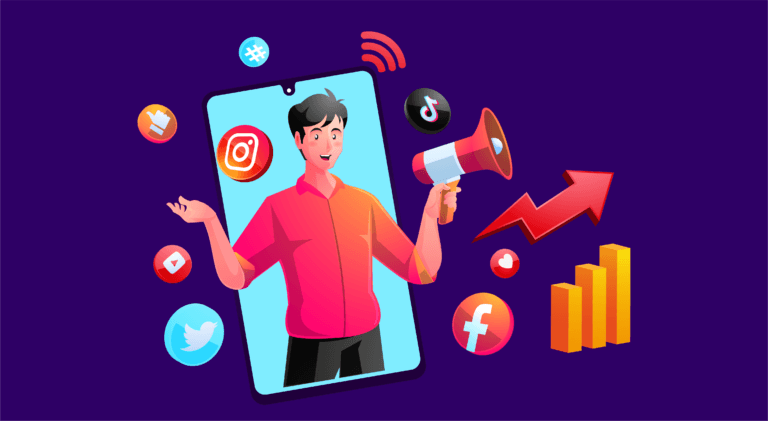
Inbound marketing is a strategic approach that engages clients by delivering relevant information and experiences targeted to their specific needs.
While outbound marketing bombards your audience with stuff they don’t always desire, inbound marketing establishes relationships and addresses problems they already have. Let’s take a look at how to improve inbound marketing.
How to Improve Inbound Marketing
Leads and business results are generated via inbound marketing and if correctly planned, performed, and refined, these six strategies will contribute to a tenfold increase in inbound leads.

1. Obtain visibility in organic searches
Your company is invisible if no one can discover it on Google, Yahoo, or Bing. You’re invisible if people find you for terms that you believe are significant, but your prospects aren’t utilizing those keywords. You’re invisible if your website isn’t mobile-friendly and people search on their phones. Make sure your company isn’t going unnoticed.
Getting Google and other search engines to rank your website pages is difficult and time-consuming. Content marketing, social media marketing, website architecture, blogging, and conversion rate optimization are all part of it. These areas must be closely connected, and you must regularly check your ranking and organic visitor numbers to determine what is and is not working.
Consider boosting the number of blog entries you write to increase search traffic. If those blog pieces include keywords, keyword phrases, and queries firmly integrated into the blog strategy, they will boost your search results and influence visitor counts. Examine your website’s architecture as well. You can instantly modify URL naming standards and see an impact on results.
Change a services page to one with a question in the URL: Google will consider this a more valuable page. Finally – and this is a recent Google algorithm update – your pages must convert. When someone comes across your link and clicks on it, you must ensure they convert on that landing page. This informs Google that visitors discovered what they were seeking, boosting your ranking. Conversion is now an important aspect of search. Again, all strategies must be strategically linked.
2. Use off-site SEO techniques
The above-mentioned on-site methods are only part of the problem. The second part of the job is to discover online prospects but on other websites. They aren’t looking for you, but they are spending time online, visiting comparable sites, communities, and organizations, as well as reading blogs, emails, and content from relevant suppliers — not rivals, but existing information sources. Remember that 90% of individuals obtain the knowledge they need to make a purchasing choice from the Internet.

3. Your material must be available and easily accessible
It is difficult to bring new users from other internet properties to your website. You must construct an online behavioral profile for your target persona, identifying the blogs they read, the emails they subscribe to, the websites they visit, the organizations they belong to, and the websites they frequent.
Once you’ve identified your target community, you can begin reaching out to them and assist them in achieving their objective. Your purpose is not to sell something to community members; instead, your goal is to provide excellent instructional information to those members. You can now share your new instructional materials with community managers because you’ve generated a plethora of new educational resources.
Remember that it is the manager’s responsibility to educate and offer value to members. As a result, you now share the same aim. Once you reach a critical mass of off-site referral properties like this, you’ll notice an increase in this traffic source, with leads from these new visitors following.
4. Use social media correctly
A short look at what most people do on social media will reveal why it isn’t working. Social media is more than just a place to auto-post existing blog posts to improve your inbound marketing strategy. If that’s the case, you may be underutilizing a really powerful tool. You’ll have to work harder to engage your followers and get them interested in the conversation if you want to maximize social media and generate more traffic to your website.
This entails asking questions, soliciting feedback, and devising innovative campaigns that fully use the sharing capabilities inherent in social media platforms. Instead of simply publishing blog content, try providing discussion starters. Then, to fuel the dialogue and engage your audience, provide supporting material. Finish the mini-campaign by providing individuals with stuff that they may download.
You’re not only increasing social media exposure and attracting new visitors to your website, but you’re also offering those visitors the option to convert into leads directly from LinkedIn, Facebook, Twitter, or Instagram.
5. Optimize high-traffic landing pages
As previously stated, the lead’s most important measure is the conversion rate. Improve conversion rates and lead generation: it’s as easy as that. The best place to begin is with high-traffic landing pages.
You can double or even triple the conversion rate on these already popular pages by doing a series of optimization exercises. This is by far the quickest, easiest, and most efficient strategy to enhance lead generation in this blog, especially if your site currently has many visitors.
6. Make strategic use of content offers
Another inbound marketing strategy to boost conversion rates is strategically positioning offers on your website. Your website should have a range of pages for each stage of your prospects’ buyer journeys. You need pages for awareness, contemplation, decision-making, and offers that correspond to those pages.
If you place a “Contact Us” offer on an awareness page, the conversion rate will be pretty low since the individuals on that page do not yet want to talk to you.
If you include a Request A Demo or Free Trial offer on an awareness page, they will not convert. Why? Demos and free trials are typically bottom-of-the-funnel, decision-making offerings, and placing them on the main page — or any page – is a significant error. Instead, go through a mapping exercise with your website to determine each page’s purpose in the customer journey. Then, add the relevant offers on the appropriate sites.
This test frequently indicates that your website lacks pages for various phases of the consumer journey. These pages must be included to provide visitors with the experience they want to convert from visitor to lead.
The inbound methodology can be applied in three ways:
Attract
This involves attracting the appropriate people with excellent material and interactions that establish you as a trustworthy advisor with whom they want to work.
Engage
This involves delivering information and solutions that address their pain areas and aspirations, increasing their likelihood of purchasing from you.
Delight
This involves assisting and supporting your customers to succeed with their purchases.
Conclusion
We hope that these tips to improve your inbound marketing can help you achieve your goal of increasing traffic to your website. So, get on it, leverage your epic website by integrating these inbound marketing tips and drive up massive web traffic.
FAQs
SCOPE stands for
● Standardize
● Contextualize
● Optimize
● Personalize
● Empathize
Inbound marketing is the practice of assisting potential clients in locating your firm. Inbound marketing is a strategy that uses many types of pull marketing, such as content marketing, blogs, events, search engine optimization (SEO), social media, and others, to increase brand exposure and attract new customers.
● Share and adhere to your brand’s principles.
● Concentrate on the consumer experience.
● Put up relevant content.
Latest Blogs
Explore how Google’s 2025 AI search updates triggered ranking chaos. Learn actionable strategies to adapt your SEO for AI Overviews, zero-click searches, and SERP volatility. Stay ahead now.
Learn how to rank on AI search engines like ChatGPT, Perplexity, and Gemini by optimizing your content for authority, structure, and relevance. Stay ahead in AI-driven search with this strategic guide.
Explore the best healthcare SEO services for your medical practice. Improve online visibility and effectively reach more patients in need of your services.


